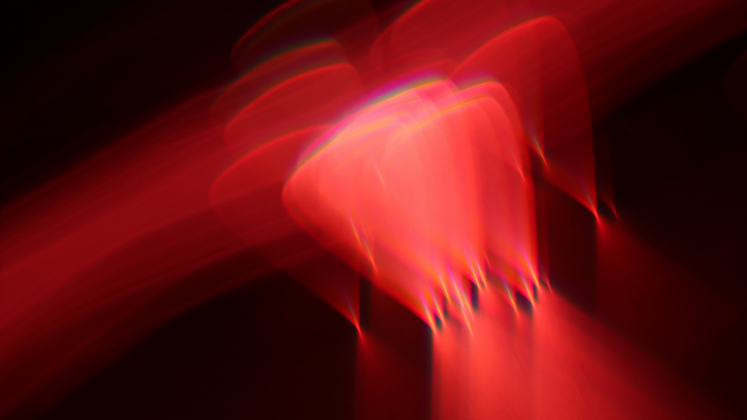In The Plastic Turn, Ranjan Ghosh posits plastic as the defining material of our age and plasticity as an innovative means of understanding the arts and literature. Joff Bradley welcomes this innovative philosophical treatise on how we can make sense of the modern world through a plastic lens.
The Plastic Turn. Ranjan Ghosh. Cornell University Press. 2022.
 There are few books nowadays in which you can find expansive discussions on everything from the aesthetics of polymers and molecules, Indian poetics, and sculpture, to the lineage Umberto Eco-Aristotle-Dante-Kant-Borges-Foucault-Deleuze. Not only that, but this fine book for humanities students and scholars juxtaposes crystalline structures, thermoplastics and thermosetting, alongside treaties on critical thinking, T. S. Eliot, the poetics of flow and globalisation, the non-metaphorical nature of plastic, as well as Polyvinyl Chloride (PVC) and Indian philosophy.
There are few books nowadays in which you can find expansive discussions on everything from the aesthetics of polymers and molecules, Indian poetics, and sculpture, to the lineage Umberto Eco-Aristotle-Dante-Kant-Borges-Foucault-Deleuze. Not only that, but this fine book for humanities students and scholars juxtaposes crystalline structures, thermoplastics and thermosetting, alongside treaties on critical thinking, T. S. Eliot, the poetics of flow and globalisation, the non-metaphorical nature of plastic, as well as Polyvinyl Chloride (PVC) and Indian philosophy.
The way Ghosh’s book does this so cleverly throughout is to ask after the nature of plastic and, well, the very plasticity of the term. Ghosh structures the book in a manner that combines free-flowing exploration with organised thematic sections. The narrative moves seamlessly between different ideas and works of literature, creating a dynamic reading experience which moulds the intellect. Additionally, the book is divided into sections, each with specific themes concerning plasticity (turning, the literary, tough, literature, affect) that provide a structured framework for understanding the diverse range of topics covered.
Ghosh asks his readers: How has plastic come to infiltrate so many aspects of our everyday lives, and why must we turn or bend toward it?
Ghosh asks his readers: How has plastic come to infiltrate so many aspects of our everyday lives, and why must we turn or bend toward it? For many readers, this may not be a question that usually springs to mind, but once we immerse ourselves in Ghosh’s prose, we learn that the plasticity of “plastic” has a versatile reach and applicability, as it allows us to explore the aesthetics of material and materialist aesthetics.
The book is not a straightforward, inflexible treatise on environmental waste pollution per se, though it does nevertheless touch upon ecological issues; rather, its stance is something akin to a philosophical material science of plastic. It is more aesthetico-ecological in that sense. A key trope is the materiality of plastic, its codification, its expressive potential, its inspiration. And with this, the turn to plastic raises our eyes to its futural possibility. What can plastic do to transform the world, to mould and conjure new futures?
Thinking can never be without plastic material. Plastic matters in its materiality, in its affective-aesthetic power, in its technology.
What we learn much about from this mould-breaking (iconocl(pl)astic) book is the plasticity of poetry and how we must address language as the house of being’s plasticity, to reshape Heidegger’s words. Indeed, thinking can never be without plastic material. Plastic matters in its materiality, in its affective-aesthetic power, in its technology. Plastic offers a new sensibility and sensitivity. Plastic makes us think of moulding and malleability and the possibility of infinite shapes and forms, the nth degree of concepts. As the author says, plastic remodels, crafts and carves thinking, habits, lifestyles, emotions, economy, and passion. Ghosh shows the asymmetric connection between the material of plastic and the aesthetic and makes a pathway from denotation to deduction, to representation, and to asymmetry because, for him, plastic is such a malleable material form.
The materiality of plastic shows this through its dimensions of visibility, the haptic, the figure. And so, as we come to understand the way that plastic softens and solidifies, moulds and remoulds; we learn of the aesthetic hidden in the material; how the structures of plastic can be transferred to the structures of poetry and literature; and how material crystalline natures are somehow expressed in the crystalline textuality of poetry. The plastic offers new readings, joins chains of meaning and bonds ideas together, demonstrating that poetry, philosophy, language and literature are megamolecules or polymer in nature, in the way they open themselves to multiple interpretations, different meanings. Plastic helps us to understand the flow and movement of text, to understand, how plastic’s lubricity can be passed on to the text itself, how “plasticisers” open up the text, disturbing its stasis.
The plasticity of text doesn’t mean anarchy or structurelessness, because plasticity functions through plasticisers. This is how and where something can begin to gel, to take on form, structure, meaning
But more than this, the plasticity of text doesn’t mean anarchy or structurelessness, because plasticity functions through plasticisers. This is how and where something can begin to gel, to take on form, structure, meaning. Meaning-making is only possible with and through the operations of the plasticisers of the text. As Ghosh brilliantly shows, The Waste Land is PVC; it has its own polymeric status. Without the plasticisers, poetry would be rigid and strict in its meaning-making abilities. What this book so cleverly contends is that plastic’s formation and deformation not only suggest the endless remodelling of the term, but the very meta-modelisation or meta-moulding of the concept, that is, creating models that represent other models with the task of revealing new radical and revolutionary potentials.
Plastic has ‘unmade us’ and ‘ungrounded’ us, and the way we think, express, and love. Plastic gives sense to the question of new modes of extinction.
The qualities of plastic – durability, flexibility, and moldability, cohesiveness and consistency – suggest that the concept will linger and outlast us all. We need to know this, because as the author argues, we moderns have already unconsciously embraced deep forms of plasticity. The author adds to this description by suggesting that plastic is inherently connected with the quest of modernity, that it is essentially disruptive and oppositional. And now, in this time of the plastisphere and the plasticene, and with the Earth encrusted and entangled in plastic, and as plastitrash abounds, the concept should not be without criticism. We come to appreciate Ghosh’s congeries of performatives: the thanatopoetics (or death-poetics) of plastic, “the history of our inheritance,” the way plastic has “unmade us” and “ungrounded” us, and the way we think, express, and love. Plastic gives sense to the question of new modes of extinction. Plastic discloses the life-in-death of humankind. As Ghosh says, contorts the image of humankind: “[P]lastic has stunned the anthropos, threatening to morph them within a circuit where human comes to surprise human” (36).
With seas already full of plastic, a book like Ghosh’s demands that we open ourselves up to the concept of plasticity in the hope of transforming, remodelling another way to be
With seas already full of plastic, a book like Ghosh’s demands that we open ourselves up to the concept of plasticity in the hope of transforming, remodelling another way to be, to speak, to think, to see, and to feel. The future is plastic, bendable but not breakable. This is the hope of Ghosh’s methodology. The book in this respect sets out a new language, a new code and discipline; indeed, it demands a new politico-philosophical vision and for this reason, it is an original and worthwhile reading experience for all those concerned with the humanities, the Anthropocene, the written word and the ecology of good and bad ideas. Ghosh’s Plastic Turn not only breaks the mould of literary criticism but asks others to refashion critical literature in elastic, versatile and plastic ways.
This post gives the views of the author, and not the position of the LSE Review of Books blog, or of the London School of Economics and Political Science. The LSE RB blog may receive a small commission if you choose to make a purchase through the above Amazon affiliate link. This is entirely independent of the coverage of the book on LSE Review of Books.
Image Credit: Serrgey75 on Shutterstock.







